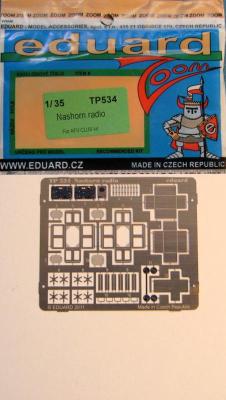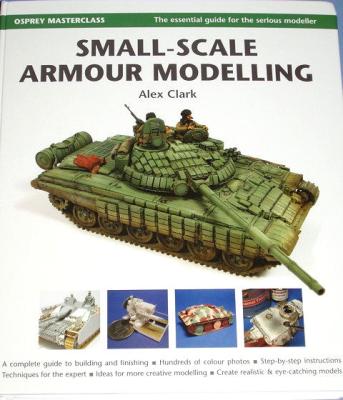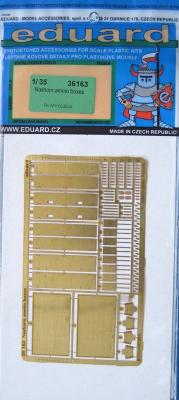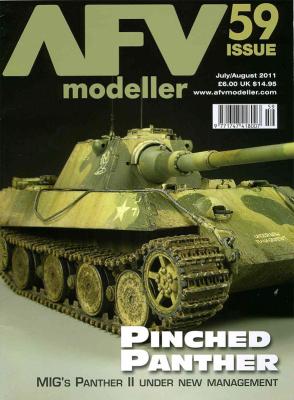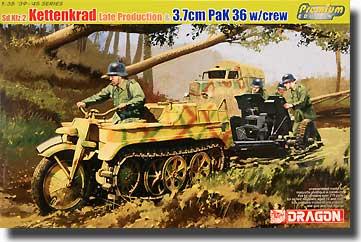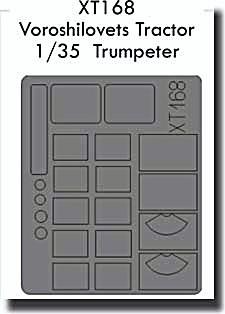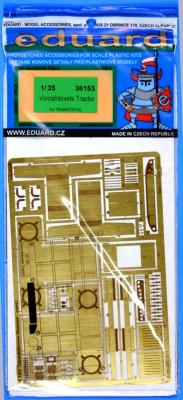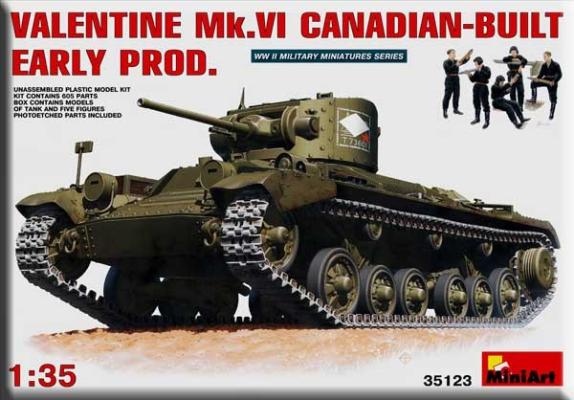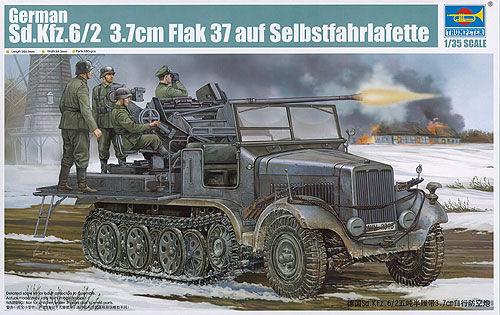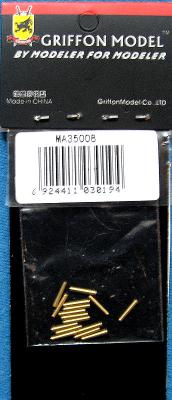This newly released radio for the AFV CLUB Nashorn kit is a really nice item. Included in Eduard’s kit are two radios which sit in a bay, one on top of the other, which is positioned between the ammo case and the rear door. Also included in the kit is a small set of headphones which attach to a small box above the radios that allows the operator to listen silently. It’s a pretty neat setup and will look nice in the rear compartment along with other items and stowage for a real look.
I have a number of Osprey’s “How-To” Masterclass books in my library and have benefited from and enjoyed every one of them. This latest volume by Alex Clark is no exception. “Small-Scale Armour Modelling” (yes, I know, it’s not spelled correctly in US English) is a wonderful look at the world of small-scale armor - my favorite modeling subject.
This book (like the Osprey Steve Zaloga armor Masterclass book I reviewed earlier this year) is presented in a hardcover format with a spiral-type wire binding. I really like this feature because it allows you to use the book as a handy desk reference while working, since it stays open to the page you need without having to crack the binding to keep it open. The page stock is nice and heavy and the printing quality is top-notch, with full-color photography used throughout to illustrate many of the how-to ideas in the book.
The book is presented in eight concise and easy to read chapters. They are as follows:
Eduard has recently released a few Photo Etch items for the AFV Club Nashorn kit. This review encompasses the Nashorn Ammo Boxes.
In general, Eduard has replaced the back, the top and the folding doors of these boxes, which when shown closed the hinges can be clearly seen. When the box is viewed open the doors are “collapsed” and folded on top of each other and sit on top of the box. I built it open to also show the enhancements inside and also when the model is finished I intend to show the boxes mostly loaded with ammo and with a slight weathering on the inside. If you look close you might notice that I am using the “salt method” for the weathering process.
The summer issue of AFV Modeler lives up to its pedigree as a world-class modeling magazine. The cover article is a riff on Luftwaffe ’46. Using what I believe is the Dragon Panther II kit, Miguel Jimenez (MIG products founder) describes his flight of fancy – the Americans and Germans unite at the end of the war to battle the Communist menace using German equipment. The bulk of the article is devoted to giving the tank its marvelous finish. Using color modulation and the hairspray technique, the author gets a fantastic result using advanced finishing techniques.
The next article features Denes Benedick’s diorama. Set in the last days of the 1940 French campaign, the Bronco A13 Mk. II and Adler Kfz. armored car builds a very nice diorama depicting the British First Armored Division on the offensive.
The Sd.Kfz.2 Kleines Kettenkraftrad (ketten is German for tracked, kraftrad is German for motorcycle) was one of the more unique vehicles designed and used during World War II. Initially designed for use by the airborne troops, and able to be carried inside of a Junkers Ju-52, the vehicle was used to lay communication cables, pull loads, and could carry two soldiers on the rear bench seat (probably not comfortably though). Towards the end of the war, the Kettenkrad was also used for towing aircraft in order to help conserve their aviation fuel. When operating at higher speeds, steering was actually accomplished by applying the brakes to the tracks, as the front wheel was more useful at lower speeds. There are some photographs that exist of the vehicles in use with no front wheel installed. During the war, two versions of the vehicle were produced with a total production of some 8,345 units.
These sets of masks are for the use in painting the model without painting the clear glass windows and lamps. The masks are made of a vinyl type of material and are different from the yellow “Tamiya” type of tape. Because they are of this vinyl type of material, they are much stiffer, but do allow you to place them fairly easily. However, it became a task to remove them without popping the glass out. There is a two part mask for the windshield that allows for a depiction of a dirty windshield that has been wiped clean by the windshield wipers. This worked very well and does make the weathering process easier.
Page 1 has the replacement of the front bumper after removing the plastic one. You will need a PE bending tool as the replacement part is several inches long. This step also replaces the rear fender support with a PE U channel. A bending tool would be helpful here. There are replacement foot petals, but I did not use them. They are deep in the cabin and are hard to see unless you leave the doors open. There are two front grill add-ons that look very good. The final item on this page is the addition of PE chains to the towing bolts. I did not place them on until very late in the build, as these have a tendency to pop off during handling.
History Brief:
Vickers-Armstrongs privately designed the Valentine. Based on the A-10 Cruiser tank it was submitted to the War Office on Feb 10 1938. The development team matched the lower weight of a cruiser tank to the suspension and transmission of the A10 heavy cruiser, with the superior armor of an infantry tank. The new design was easier to produce and cost less than the older Matilda tanks. The first Valentines used a gasoline engine with conventional steering. The Mark II used a diesel version of the engine while the Mark IV and later variants GMC diesels.
Initially designed as a medium artillery towing vehicle, the Bussing-NAG Sd. Kfz 6 was eventually converted to carry the 37mm FlaK37, providing the base vehicle for mounting captured Russian 76.2mm anti-tank guns, as well as rotary snow plows. The 37mm-armed version, known as Sd. Kfz 6/2, proved more successful, providing army anti-aircraft units with mobile, though unprotected, protection from air attack. They usually carried a crew of seven, and generally towed a trailer containing ammunition and crew equipment. Although useful, they were expensive to produce, and their jobs could be performed by other, heavier halftracks, and they were phased out of production in 1941. The surviving examples soldiered on until attrition claimed them.
As most of you armor modelers know, Griffon Model has been making photo-etch accessories for just about every aspect of Military Modeling for quite a long time and is regarded as one of the leading manufacturers of photo etch and other aftermarket products. Their name is among the best in the business.
This particular sample is the 3.7cm Ammo Shell Cases (spent shells) for the 3.7cm Flak in 1/35 scale. These are obviously made for adding that extra degree of detail that we modelers strive for to enhance our personal masterpieces.
This package contains sixteen spent shell casings made of brass with that extra margin of detail which shows the engraved circles inherent to this specific type of shell. They are approximately 3/8” long and the machining is amazing. Needless to say, there are no instructions included.

